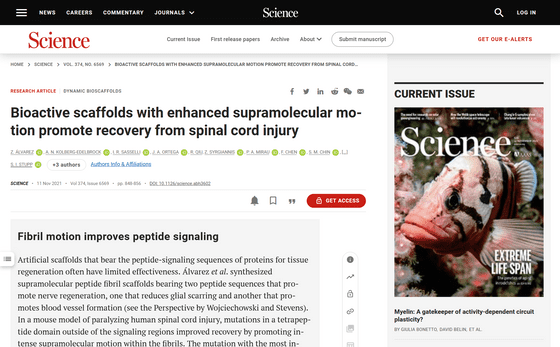Successful mouse experiment of 'a drug that repairs spinal cord damage and makes it possible to walk again'

A research team at Northwestern University School of Medicine has announced that it has developed a new drug that can regenerate cells from mice with SCI and allow them to walk again within four weeks of treatment.
Bioactive scaffolds with enhanced supramolecular motion promote recovery from spinal cord injury

In an Astonishing Feat, a New Drug Reversed Paralysis in Mice With Spinal Cord Injury
Samuel Stap and colleagues at Northwestern University injected peptide fibril, a signal that activates cell receptors, into the tissues surrounding the spinal cord 24 hours after cutting the spinal cord of laboratory mice. After that, we followed up for 4 weeks.
Four weeks later, the treated mice regained their ability to walk much as they did before the spinal cord was amputated. When Stap et al. Investigated the effect of treatment on cells, the protrusions of neurons called axons were regenerated, and the amount of tissue called glial scars that interfered with nerve regeneration was significantly reduced. He said he was doing it.

In addition, specific mutations in peptide fibrils activate the movement of the molecule, allowing the molecule to connect more effectively to neurons' receptors. These molecules are biodegraded within a few weeks and become nutrients for the cells, Stap and colleagues say.
'Therapeutic drugs are aggregates of many molecules rather than a single molecule, which could usher in a new generation of drugs called'supramolecular drugs',' said Stap and colleagues.

Related Posts:







